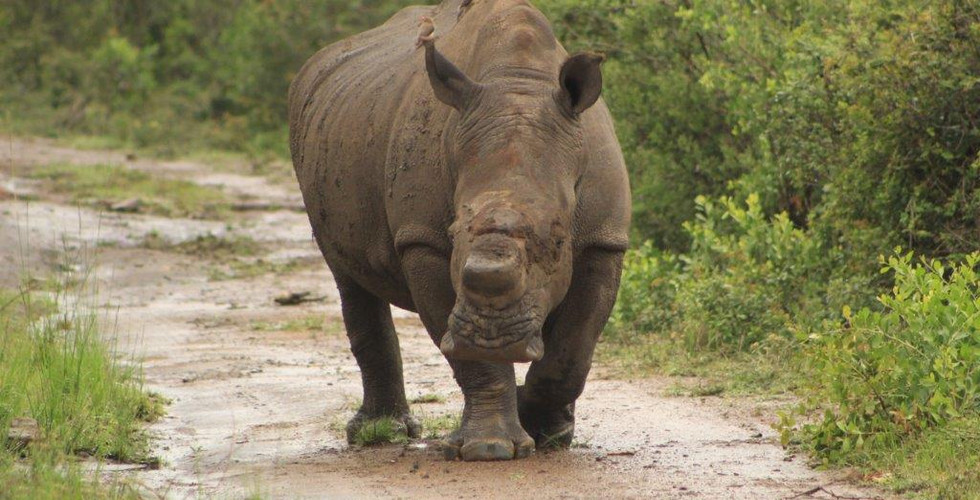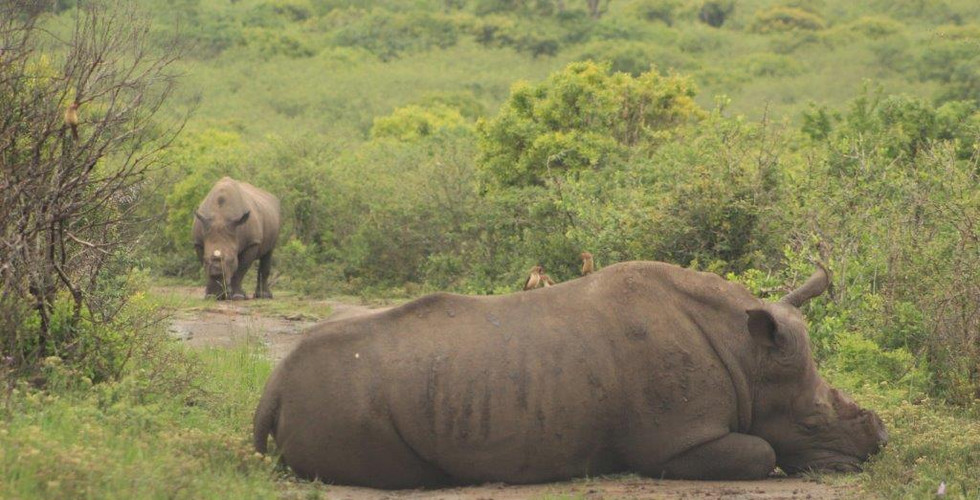Rambo: Fertility Science Behind Conservation
- Ayan Mehra
- Jan 9, 2022
- 4 min read
After months of waiting, a new member of Thula Thula has arrived. Rambo. Rambo is a male southern white rhino who was introduced to the herd in the hopes of expanding the rhino family at Thula Thula.
Rambo arrives at Thula Thula
Not long ago, Thula Thula had four rhinos, Mona, Ntombi, Thabo and Lisa. Thabo is the only male rhino of the bunch. However, both Thabo and Ntombi were orphaned from a very young age, and grew up together under the care of humans, before being released into the wilds of Thula Thula. As orphaned and captive rhinos are know to frequently have fertility issues, Thula Thula, invited Dr. Morné de la Rey, and Henrik Hansen from Embryo Plus and Rhino Repro to use the latest in rhinoceros fertility science, so that Thula Thula increases the chances of a new rhino calf. I interviewed Dr. Morne De La Rey on what he did at Thula Thula.

Dr. Morné de la Rey
INTERVIEW
Ayan: I read on your website that you help rhinos in captivity and orphaned rhinos with fertility issues. Why do these rhinos have fertility issues?
Dr. Morné de la Rey: Rhinos need a hierarchy to be sexually stimulated. Plus they need open areas for their mating rituals. Normally in zoos, both of these conditions are absent. Orphans also don't get raised in a normal system. They don't have dominant cows with them, and they see the rest of the rhinos as their siblings. Therefore, they don't cycle. Even poached but survived rhinos have this problem - that their ovaries shut down and sometimes don't start up.
Ayan: Is this infertility equally common in both male and female rhinos? Why is that?
Dr. Morné de la Rey: It is much more seen in female as their cycles shut down. Bulls need normally just a cow to cycle and then they are active.
Ayan: Is a rhino's inability to procreate driven more by psychological or physical barriers? If physical, what is the biological reason for infertility - is it inability to ovulate, to produce sperm, production of not viable sperm or something else?
Dr. Morné de la Rey: Cows and heifers it is for sure a hormonal effect. With bulls we do think it is more of a sociological effect that influences their libido. This is easier to heal when the cows are cycling.... but a lot is still being discovered at this stage.
Ayan: What is the procedure that you did on Ntombi and Thabo?
Dr. Morné de la Rey: Thabo - we collected semen and failed to get anything. It doesn't categorically means he is infertile.... but at least an indication that he is not highly fertile. Ntombi - we collected oocytes from her and injected hormones. Embryo Plus is pioneering the use of Assisted Reproductive Techniques (ART’s) in wildlife species. This technique increases the chances of impregnation and therefore increases the population of endangered species at a dramatically higher rate. The OPU procedure (Ovum Pick-Up) is done by needle guided ultrasound that collects the oocytes with a vacuum suction. This is helping to speed up Ntombi's ovulation cycle so that she is ready to bear a new calf when Rambo is in heat.
Fertility procedure on Ntombi @ Thula Thula
Ayan: How does this procedure help Ntombi get ready to breed with Rambo?
Dr. Morné de la Rey: With our research on rhinos (done mainly to save the Northern White Rhino), we have seen that this procedure kick starts females that have stopped cycling.

Oocytes collected from Ntombi
Ayan: How can kids around the world help with rhino conservation?
Dr. Morné de la Rey: Awareness is very important. Currently kids hold the social media keys. They also need their passion to influence the decision makers (even if that is just their parents who then donate or influence other people). Small donations can go a long way. If a million people each donate $10..... it is a lot of money. One of my procedures costs $2000 just the consumables and drugs (excluding our time, staff, traveling, R&D). So it is quite a lot of money. But we also try and let it coincide with a dehorning or a notching. BUT if we can have one animal reproduce and she has 8 calves, who in turn have 8 calves each; this single procedure would have produced 8+64=72 rhinos in 2 generations! Therefore, if you consider the costs and the results in 2 generations, it is relatively small funds compared to the number of offspring. You can read more about the work we do on our website Rhino Repro.
As Dr. Morné de la Rey discovered at Thula Thula, while Ntombi seems to have developed into a normal wild rhino, Thabo has not. He still continues to be skittish around female rhinos, and the tests on Thabo show that both psychologically and physically, he is unlikely to be able to reproduce. As the only male rhino at Thula Thula, this would mean that Thula Thula's rhino family could not continue to grow.
Because of this, Thula Thula decided to get another male rhino that could breed with the female rhinos and expand the family. Rambo is this rhino. Furthermore, Thabo has been acting out recently, and is not a very well mannered rhino. To combat this, Rambo also serves as an older role model for Thabo, showing him how to be well mannered and calm.
Rambo & Thabo @ Thula Thula
With the amazing generosity of my supporters, I have been able to raise enough money to adopt Rambo for one year. I think that this is important, as I want to do everything I can to ensure Rambo's safety as the original father of the rhino family at Thula Thula. Similarly to Gobisa, a male elephant foreign to the original herd, Rambo plays a vital role in securing the future of the Rhinos at Thula Thula.
Here are some images and videos of the Thula Thula rhino family.
From L-R: Ntombi & Thabo, Mona & Lisa, Mona & Sissi






















Comments